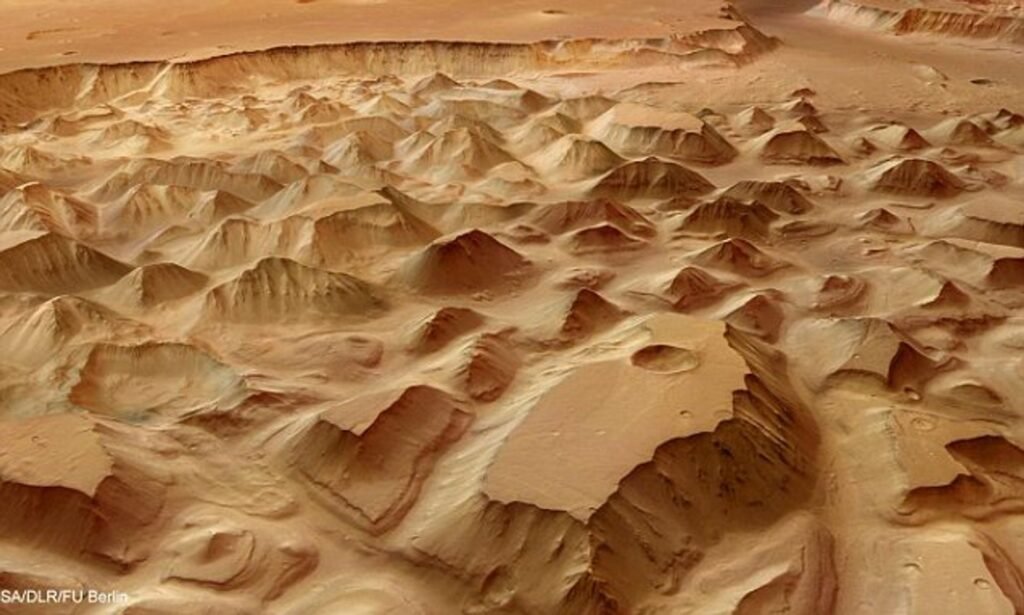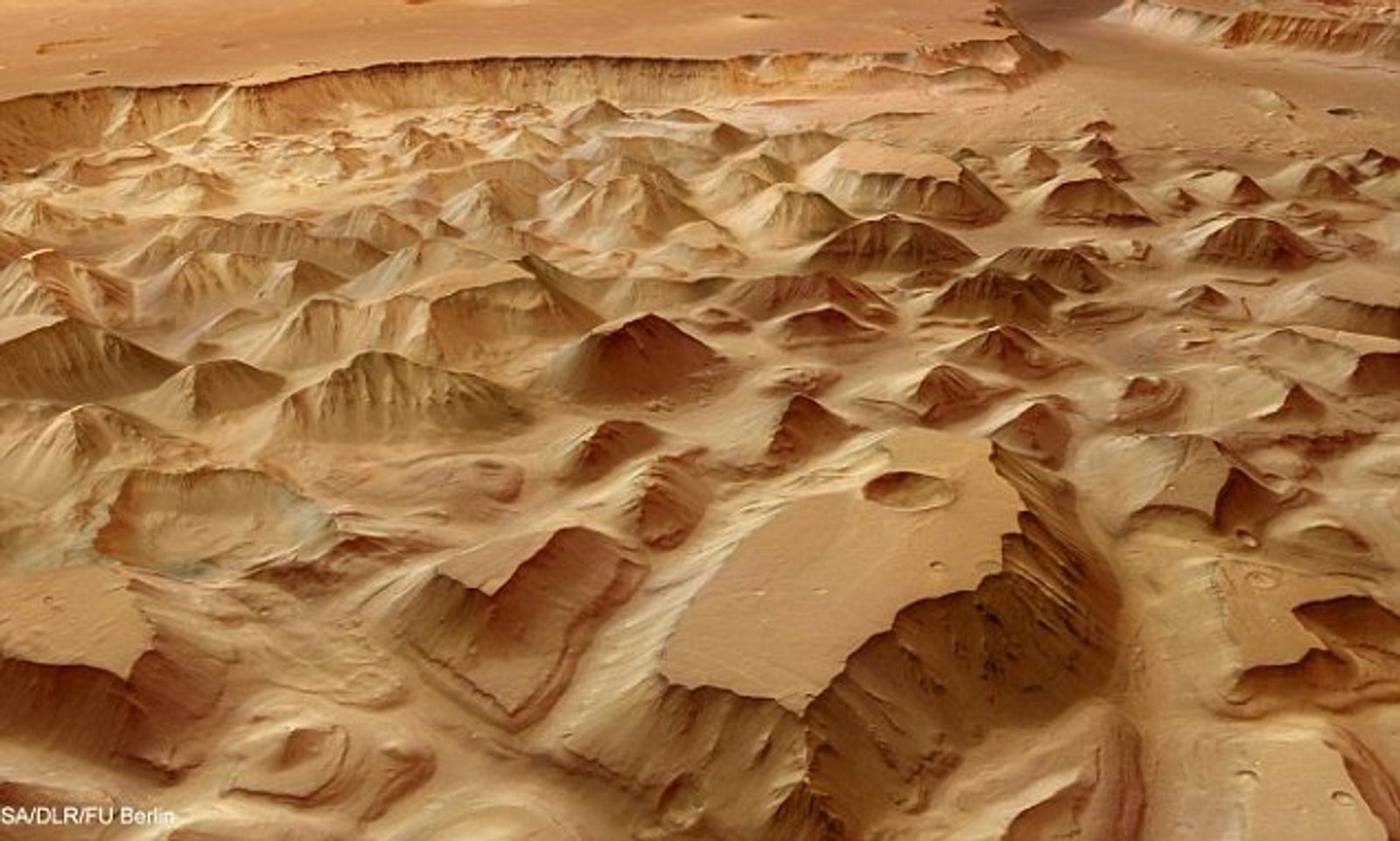Mud lake on Mars may hide signs of life
The remains of an ancient mud lake have been discovered on Mars which may hide signs of life. It is mentioned in an article published in Scientific Reports. Researchers from multiple institutions, including NASA Ames Research Center, the University of Arizona, the Autonomous University of Barcelona, the Blue Marble Space Institute of Science, and the University of Florida, jointly authored this study.
This research shows the presence of a mud lake in the chaotic terrain, Hydraotes Chaos. This territory is a broken-up region in the Oxia Palus quadrangle of Mars. It is a disordered pile of mismatched hills in the northern hemisphere of Mars, almost next to the equator. Scientists believe they could easily find signs of organic matter or living organisms in this area.
Click here to find out the reason why Scientists track alarming melt in Antarctica sheets
Scientists have known the area of Hydraotes Chaos for some time as the locality for many channels and systems of cascade lakes.
About four billion years ago Mars was warmer and wetter. During that time, the red planet, with an ocean in place, actively conveyed its waters from the southern uplands to the northern lowlands. The water eroded the rocks and as a result, formed sedimentary rocks. Most of them are now found in the northern area.
Mud Lake on Mars: Clues to Ancient Life?
A recent study shows there was not just a reservoir in the Hydraotes Chaos at that time. But a mud lake or rather a system of lakes in which mud deposited regularly. Unlike the northern plains, where small particles formed through local erosion, the mud in the newly discovered lake came from local sources, in contrast to collecting particles from distant locations.
Scientists believe that Hydraotes Chaos overlaid a reservoir of buried biosignature-rich water which may hide signs of life on Mars.

Researchers established the theory that there was an underground aquifer outlet in Hydraotes Chaos in the Amazonian epoch about 4 billion years ago. No particles went into the aquifer from outside this area. However, there were huge caves under the surface due to volcanic activity. As a result, organic molecules could form inside caves which were later brought to the surface and remained in sediments.
The study indicates the presence of numerous mud volcanoes in this region. There is also evidence suggesting that these volcanoes remained active until approximately 1 billion years ago.
Read here to know the details of New tests that confirm the ancient human footprints in New Mexico
Share this content:




Post Comment